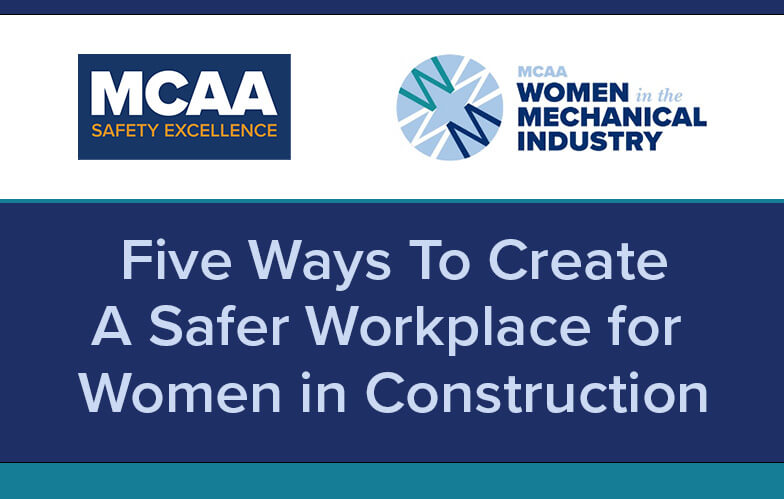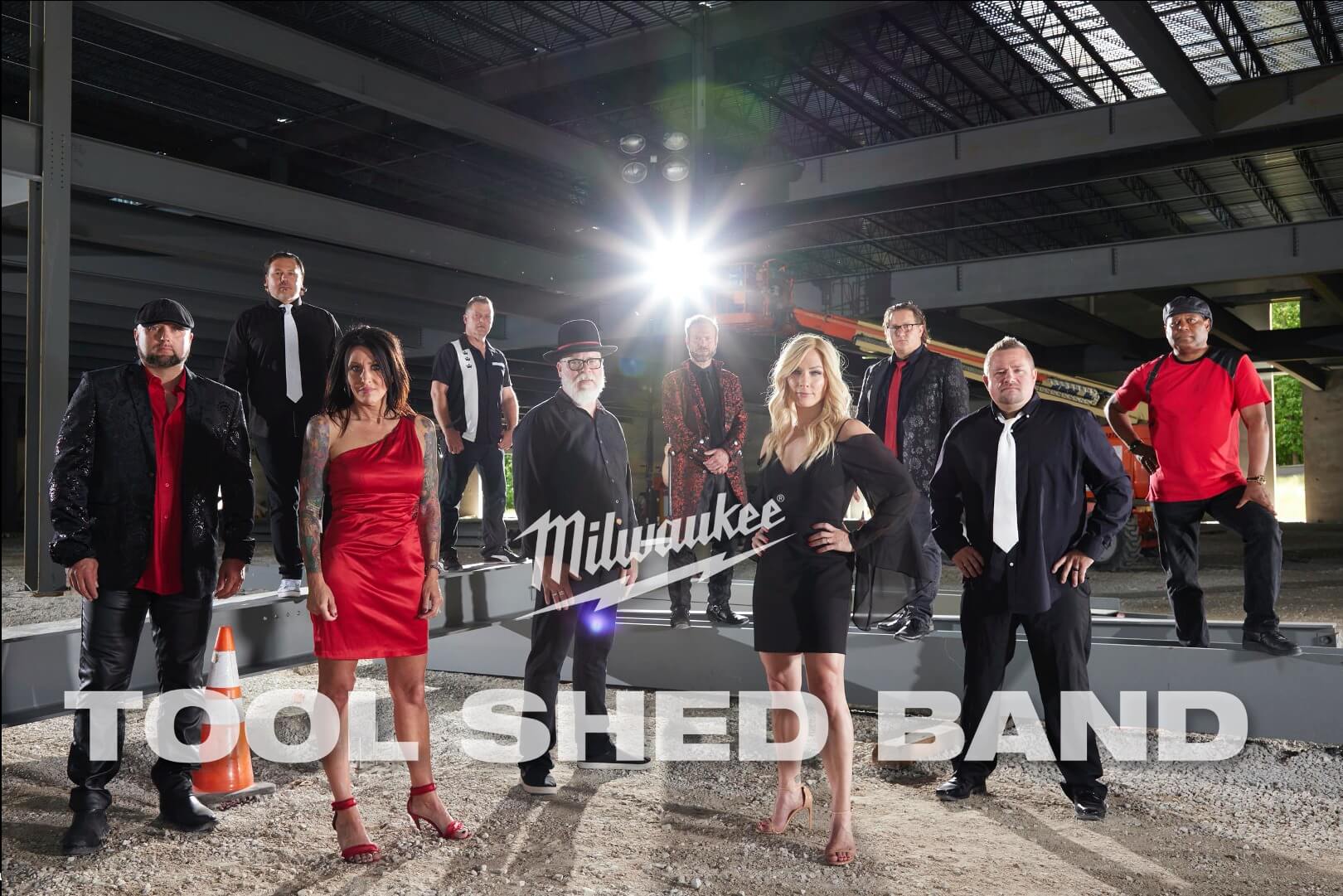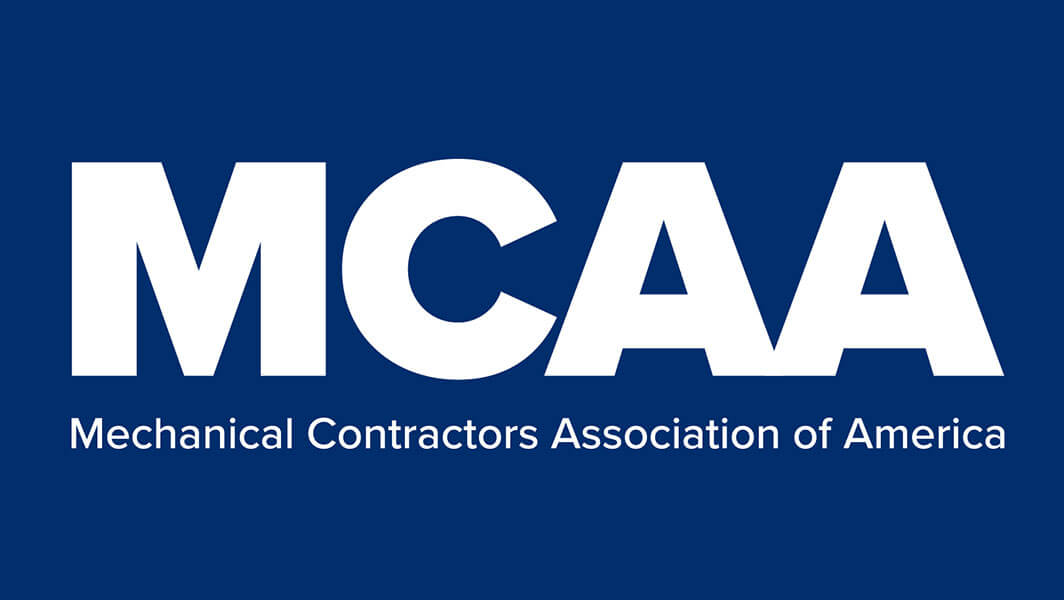
Over 390,000 women work in the construction industry, up significantly over the past decade. Despite this tremendous growth, many women still face challenges, including safety and health. All workers deserve a safe workplace and to return home at the end of the day in the same shape as when they got there. MCAA’s Safety Excellence and Women in the Mechanical Industry initiatives are pleased to bring you these tips for creating safer workplaces for women.
The following tips are adapted from the U.S. Department of Labor (DOL) blog:
- Provide Properly Fitting Personal Protective Equipment
Women’s safety on the job is undermined when safety measures, such as providing personal protective equipment (PPE) for diverse bodies, are not implemented in favor of a one-size-fits-all approach. A recent survey of tradeswomen and non-binary tradespeople found that nearly three in ten report never or rarely being provided gloves or safety equipment in sizes that fit them. According to another survey, 89% of tradeswomen said they had difficulty accessing PPE that fits and 77% reported they were exposed to unnecessary hazards because of ill-fitting PPE. In response, the Occupational Safety and Health Administration (OSHA) issued a notice of proposed rulemaking to ensure that all employees have PPE that fits properly.
- Guarantee Safe and Sanitary Bathrooms
OSHA’s sanitation standards require employers to provide accessible sanitary facilities for ALL personnel and to ensure that these facilities are maintained appropriately. Despite this, many tradeswomen we’ve talked to say they still lack access to clean toilets on sites, and too many encounter hostility and harassment from male colleagues when bathrooms are designated for women only. Inadequate and unsafe facilities lead to many women reporting that they avoid using toilets or drink less water. The result can be a higher incidence of bladder and kidney infections and an increased risk of heat stress and other health problems.
- Ensure Protections for Pregnant and Postpartum Workers
Pregnant and postpartum workers often have unique health and safety needs. The new Pregnant Workers Fairness Act requires covered employers to provide “reasonable accommodations” to workers’ known limitations related to pregnancy, childbirth or related medical conditions unless the accommodation will cause the employer an undue hardship. Under the Fair Labor Standards Act (FLSA), as recently extended by the Providing Urgent Maternal Protections for Nursing Mothers Act (PUMP Act), covered employers are required to provide nursing employees with reasonable break time and a private space, other than a bathroom, to express breast milk at work for up to one year after the child’s birth. The Family and Medical Leave Act (FMLA) entitles eligible employees of covered employers to unpaid, job protected leave for the birth of and bonding with a child, for prenatal care and incapacity related to pregnancy, for the worker’s own serious health condition including following the birth of a child, and to care for a child with a serious health condition. Employers should ensure they are adhering to these laws and any other relevant state laws, and may choose to go beyond them by, for example, providing job-protected paid family and medical leave, paid sick leave and child care for workers with children. Supporting employees throughout all phases of their lives, including pregnancy and parenting, ensures that employers can attract and retain a pool of diverse, skilled workers.
- Prevent Gender-Based Violence and Harassment
Lack of respect, discrimination and gender-based violence and harassment (GBVH) undermine worker health and safety and drive women out of male-dominated jobs. In fact, lack of respect or discrimination is the most commonly cited reason tradeswomen consider leaving the construction industry. Employers should assess their worksites and institute policies and programs to change workplace culture and prevent and address GBVH, such as those detailed in the Women’s Bureau’s Tools for Building an Equitable Infrastructure Workforce. Addressing GBVH is not just necessary for inclusivity; it plays a role in creating safe workplaces.
- Promote Mental Health
Stress from GBVH, lack of inclusion, and demanding worksites can be harmful to worker health and increase mental health challenges, which can include mental illness and substance use disorders as well as emotions like grief, sadness, and anxiety. Research shows that workers who have not been integrated into a workplace culture are more likely to have accidents on the job due to the increased psychological and emotional stress of being excluded. These challenges can also lead to low job satisfaction for women, which results in their exit from construction occupations. OSHA’s webpage on Workplace Stress includes resources to both help understand the issue and provide guidance for employers to help address the issue.
MCAA applauds the DOL’s focus on women’s safety and health. Our Safety Excellence and Women in the Mechanical Industry initiatives are working together to bring you additional information on the topic in the future.
In the meantime, you can learn more about MCAA’s Women in the Mechanical Industry (WiMI) Initiative here. Questions can be addressed to Jocelyn Jackson, MCAA’s Director, WiMI and Dues Management.
Information on MCAA’s Safety Excellence Initiative is available here. Please contact Raffi Elchemmas, MCAA’s Executive Director of Safety, Health, and Risk Management with any questions.


